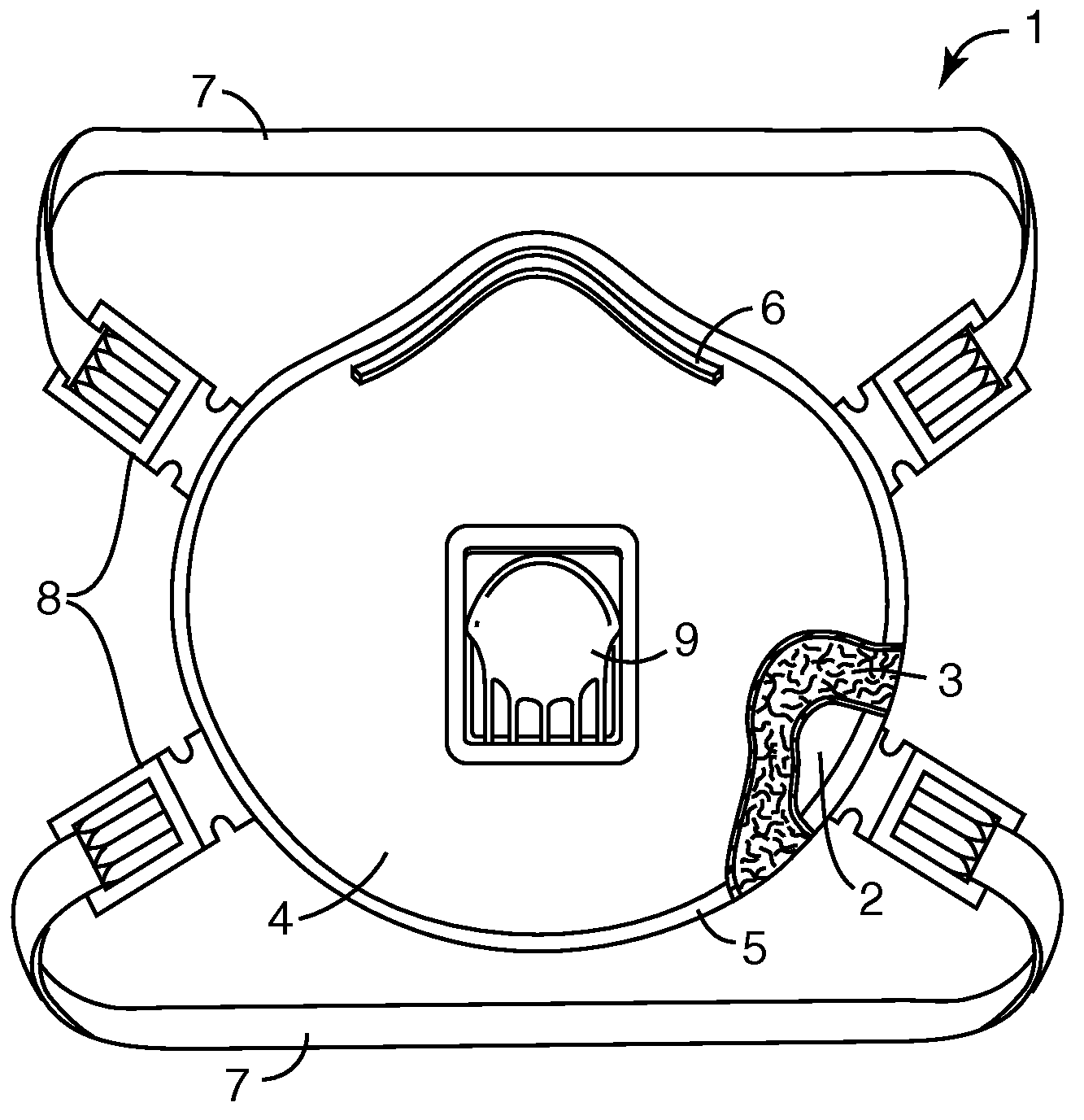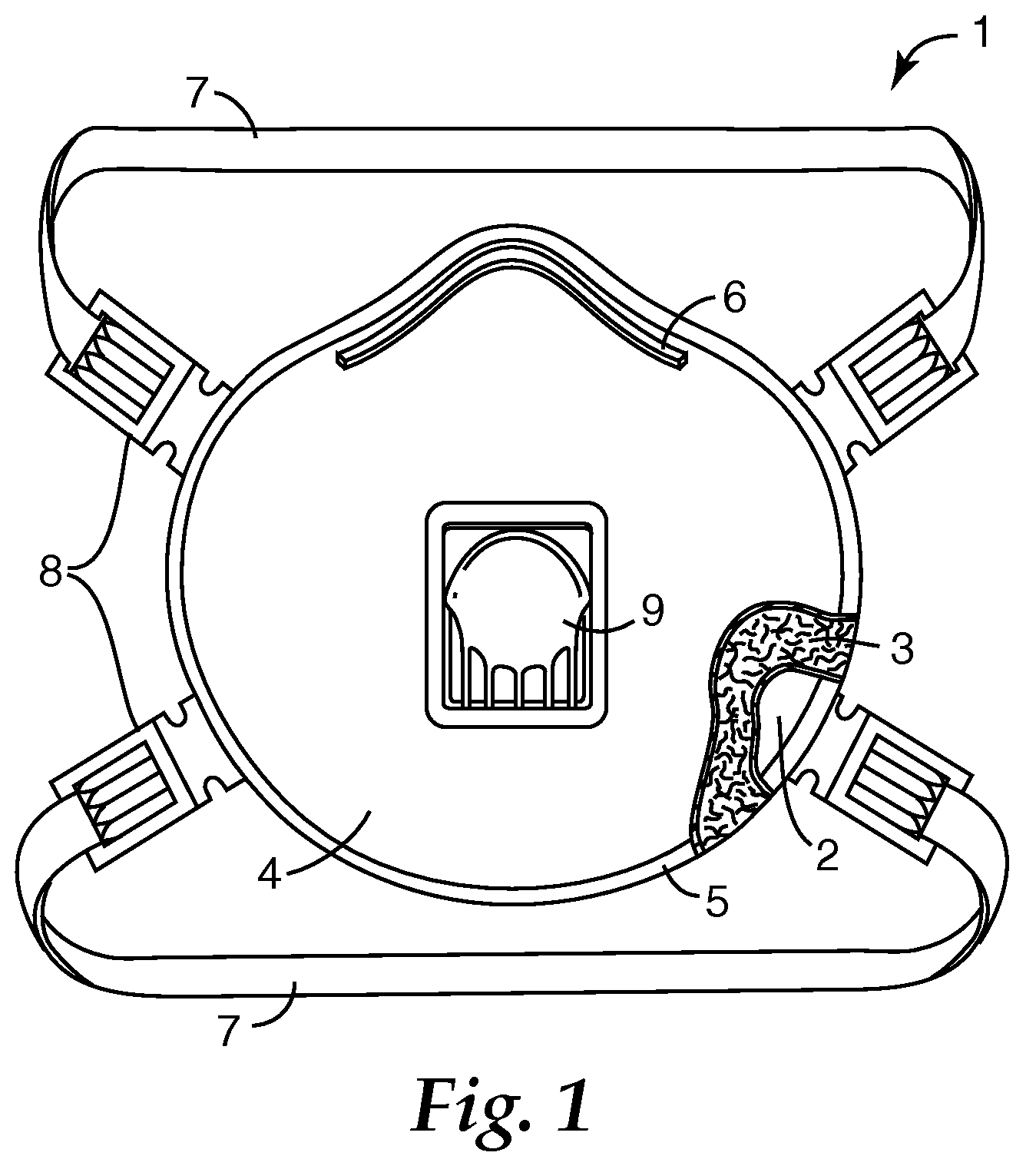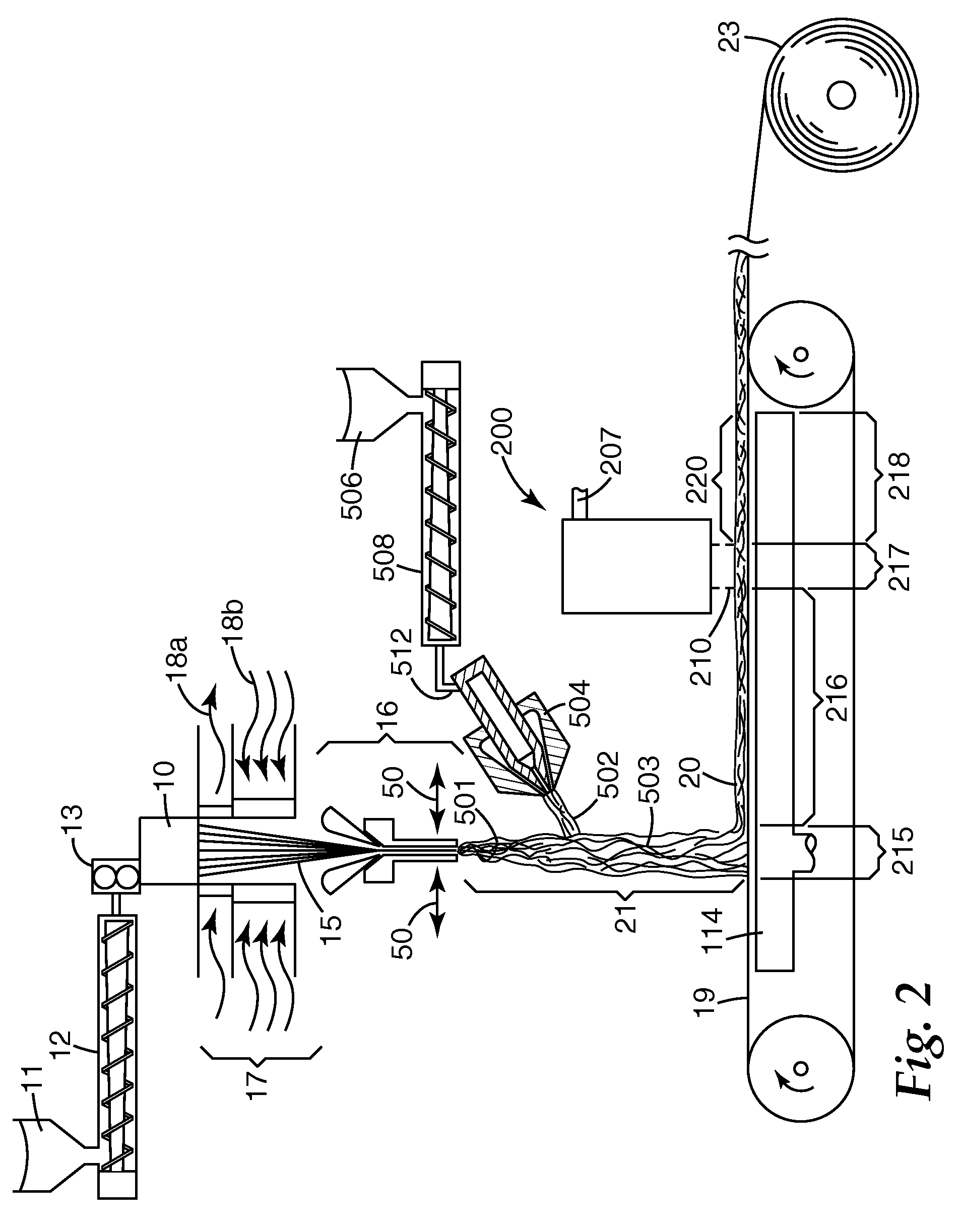Molded Monocomponent Monolayer Respirator With Bimodal Monolayer Monocomponent Media
a monocomponent, monocomponent technology, applied in the direction of pedestrian/occupant safety arrangements, vehicular safety arrangements, other domestic objects, etc., can solve the problems of insufficient rigidity of the filtration layer to permit the formation of an adequate strong cup-shaped finished molded respirator, inability to recycle unused portions of the web laminate, and inability to withstand the weight of the reinforcing shell material. , to achieve the effect of improving moldability, high charge and improving the stiffness of the molded matrix
- Summary
- Abstract
- Description
- Claims
- Application Information
AI Technical Summary
Benefits of technology
Problems solved by technology
Method used
Image
Examples
example 1
[0094]Four webs were prepared using an apparatus as shown in FIG. 2 through FIG. 5 from polypropylene meltspun fibers and polypropylene meltblown microfibers. The meltspun fibers were prepared from TOTAL™ 3860 polypropylene having a melt flow index of 70 from Total Petrochemicals, to which was added 0.75 wt. % of CHIMASSORB 944 hindered-amine light stabilizer from Ciba Specialty Chemicals. The extrusion head 10 had 16 rows of orifices, with 32 orifices in a row, making a total of 512 orifices. The orifices were arranged in a square pattern (meaning that orifices were in alignment transversely as well as longitudinally, and equally spaced both transversely and longitudinally) with 0.25 inch (6.4 mm) spacing. The polymer was fed to the extrusion head at different rates, noted below in Table 1A, where the polymer was heated to a temperature of 235° C. (455° F.). Two quenching air streams (18b in FIG. 2; stream 18a was not employed) were used. A first, upper quenching air stream was sup...
example 2
[0104]Using a meltblowing die like that shown in FIG. 8 and procedures like those described in Wente, Van A. “superfine Thermoplastic Fiber”, Industrial and Engineering Chemistry, vol. 48. No. 8, 1956, pp 1342-1346 and Naval Research Laboratory Report 111437, Apr. 15, 1954, four monocomponent monolayer meltblown webs were formed from TOTAL 3960 polypropylene to which had been added 1% tristearyl melamine as an electret charging additive. The polymer was fed to a Model 20 DAVIS STANDARD™ 2 in. (50.8 mm) single screw extruder from the Davis Standard Division of Crompton & Knowles Corp. The extruder had a 20 / 1 length / diameter ratio and a 3 / 1 compression ratio. A Zenith 10 cc / rev melt pump metered the flow of polymer to a 10 in. (25.4 cm) wide drilled orifice meltblowing die whose original 0.012 in. (0.3 mm) orifices had been modified by drilling out every 21st orifice to 0.025 in. (0.6 mm), thereby providing a 20:1 ratio of the number of smaller size to larger size holes and a 2:1 rati...
example 3
[0107]Using the general method of Example 2, webs were made from 100% TOTAL 3960 polypropylene and then 1) corona charged or 2) corona and hydrocharged with distilled water. Set out below in Table 3A are the Run Number, charging technique, basis weight, EFD, web thickness, initial pressure drop, initial NaCl penetration and Quality Factor QF for each web.
TABLE 3AQualityBasisPressureFactor,RunChargingWt.,EFD,Thickness,Drop, mmInitial1 / mmNo.TechniquegsmμmmmH2OPenetration, %H2O3-1FCorona23714.23.236.7032.40.173-2FCorona / 23714.23.236.7713.20.30Hydrocharged3-3FCorona19713.32.825.7328.70.223-4FCorona / 19713.32.825.936.30.47Hydrocharged
[0108]The Table 3A webs were next molded using the method of Example 2 to form cup-shaped molded matrices for use as personal respirators. Set out below in Table 3B are the Run Number, King Stiffness, initial pressure drop, and initial NaCl penetration for the molded matrices.
TABLE 3BPressureKingDrop, mmInitialRun No.Stiffness, NH2OPenetration, %3-1M1.828.371...
PUM
 Login to View More
Login to View More Abstract
Description
Claims
Application Information
 Login to View More
Login to View More - R&D
- Intellectual Property
- Life Sciences
- Materials
- Tech Scout
- Unparalleled Data Quality
- Higher Quality Content
- 60% Fewer Hallucinations
Browse by: Latest US Patents, China's latest patents, Technical Efficacy Thesaurus, Application Domain, Technology Topic, Popular Technical Reports.
© 2025 PatSnap. All rights reserved.Legal|Privacy policy|Modern Slavery Act Transparency Statement|Sitemap|About US| Contact US: help@patsnap.com



